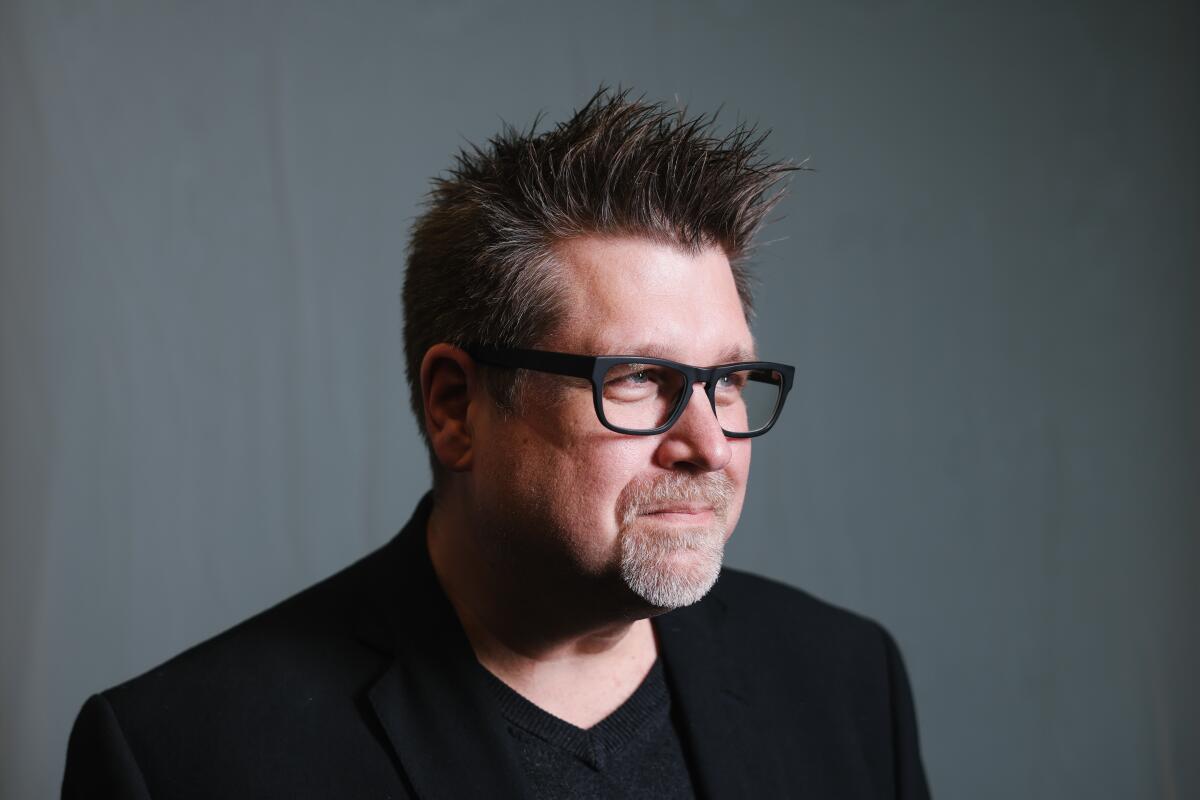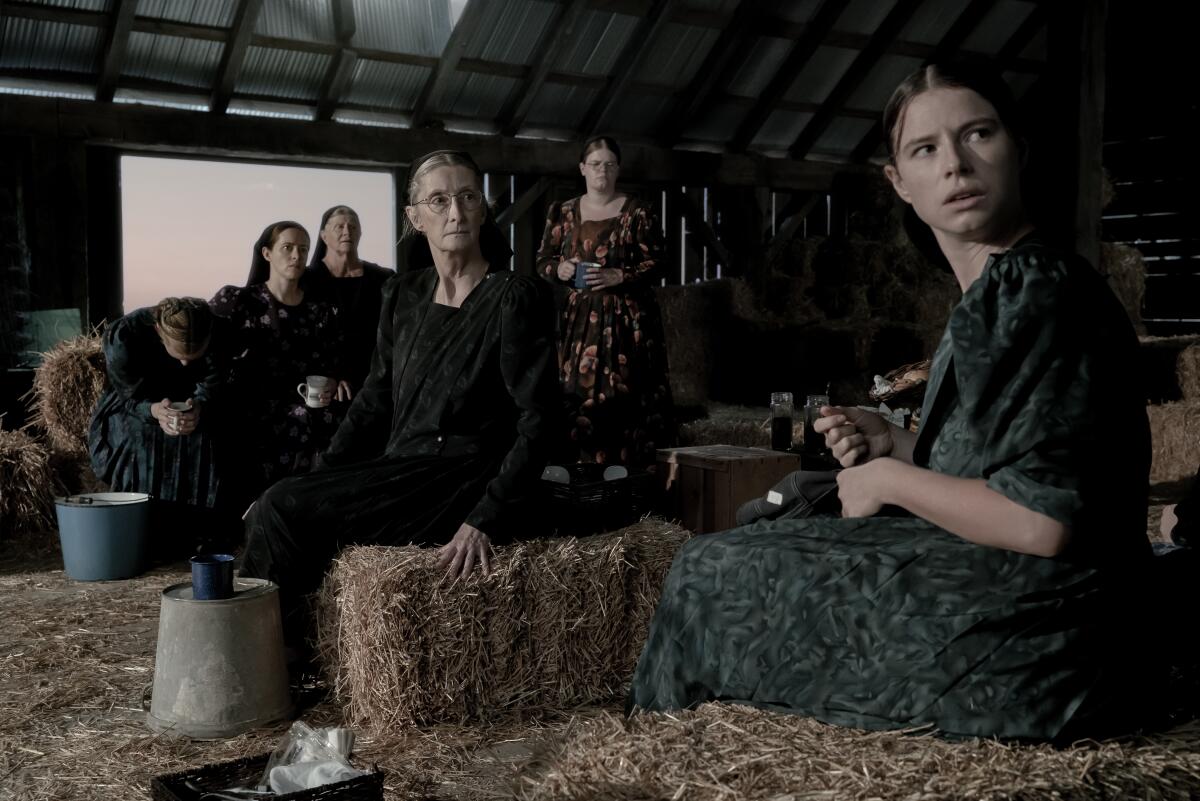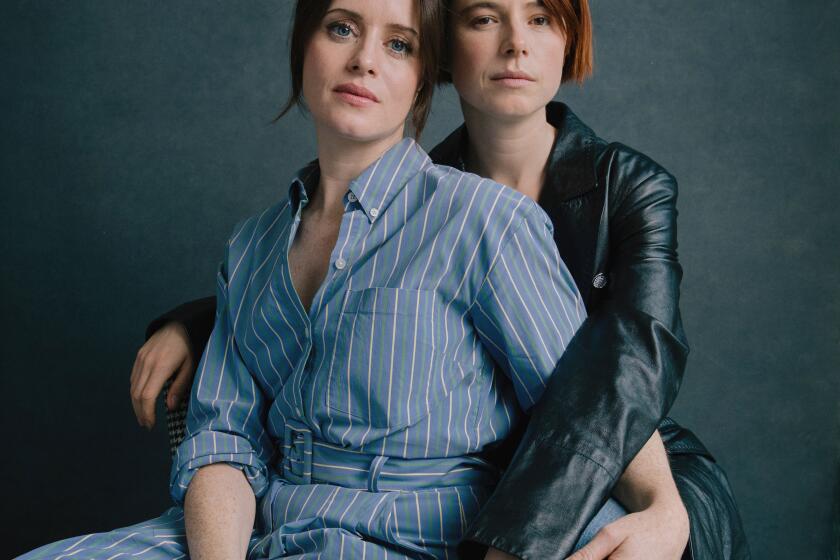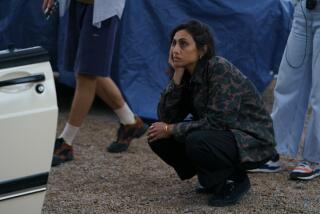How do you turn static material into an epic film?

- Share via
How’s this for a directorial challenge? Make a movie out of Miriam Toews’ novel “Women Talking,” which is essentially what the title says, set in a Mennonite colony hayloft. Sarah Polley was up for turning the static material into a moving picture, but knew she’d need the help of the cinematographer who’d shot many of her previous directing efforts (“Away from Her,” “Take This Waltz,” the short “I Shout Love”) to pull it off.
“Even though Sarah started as an actor and is obviously very focused on performance, she told me early on that she wanted to make this cinematic,” Polley’s fellow Canadian Luc Montpellier tells The Envelope. “She wanted to treat all of these women onscreen with the same level of commitment and seriousness that big male epics would have. I just loved that idea.”
What the women — played by, among others, Rooney Mara, Claire Foy, Jessie Buckley and Judith Ivey — are talking about is whether to forgive, fight or leave the men of their isolated religious community following a series of sexual assaults. They have a limited amount of time to reach a decision before the adult males return from the city, where they’ve gone to bail out the rapists.
Women have a lot to say, the two ‘Women Talking’ actors agree. Now we just need people to actually listen.
The agrarian village’s exteriors were built around a pre-existing barn in Southern Ontario, Canada. Additional scope and kineticism was achieved inside a Toronto convention center, otherwise closed by COVID-19 lockdowns, where the barn’s two-story interior was reproduced. Blue screens enabled Montpellier to mount plates of hayfields and buggy trails outside the elevated loft doors, and he could easily control light changes as the discussions lengthened into evening.
Not only was physical and temporal space extended on that set; dramatic illumination could be facilitated.
“As they get more confident in their decision-making process, the women literally take over the space,” Montpellier says. “The loft starts filling with more light when they open doors. That’s the level of precision we were trying to get, and our cast was super game to have these technical/visual things mean something.”
That included making a huge machine almost part of the ensemble.

“A lot of people would have used a Steadicam or a dolly to go from one actor to another, but we had the ability to take half of the set apart and put a big Technocrane in there,” Montpellier says. “I’ve got to hand it to my grip team — Rico Emerson was my key grip on this — they were, like, dancing with the actors with this massive arm coming in. We could float off the set as one of our characters goes to a door or a window to contemplate, then stay with them as they went back and sat down.”
“Women Talking” was shot in 70 millimeter with an ultra-widescreen, 2.76 aspect ratio that MGM developed for 1950s westerns, according to Montpellier. The camera was an 8K Panavision DXL2 with a RED sensor.
“Large-format photography gives you that really shallow focus, which is especially great when you have these collective shots of all the women,” Montpellier notes. “I wanted to be able to isolate one face and to move focus quite dramatically on a wider lens.”
With a superb cast that includes Rooney Mara, Claire Foy and Jessie Buckley, Sarah Polley’s bracing adaptation of Miriam Toews’ novel tells the story of a Mennonite community rocked by sexual violence.
Montpellier employed the same Ultra Vista anamorphic lenses used for “The Mandalorian” and Quentin Tarantino’s similarly big set-centric “Hateful Eight.”
“It gives you the quality of an older anamorphic lens that bends and focus-breathes a certain way, with the benefit of these large formats,” Montpellier notes. “I was very excited to join the old and the new; even symbolically, that’s great. Digital cameras can get very sharp but these lenses bring you back into something that’s more classic, softens the edges and, when you rack focus, it gives you a very old feeling without it being too period.”
Though it’s eventually revealed to be around 2010, the film’s time frame seems older since it takes place in a culture defined by 19th century technology, fashion and more. Polley and Montpellier conducted a month of tests before choosing a desaturated color palette that evoked a past of the mind more than a specific era.
“We were maybe gonna shoot black and white, but we felt that that was a bit too period of a feel,” the cinematographer says. “Though this is kind of an Old World society, the story’s based on an event that happened in South America not too long ago and we wanted you to relate it back to your present day. We wanted you to feel the weight of the faith, also there’s almost a Gothic image to it. We worked a lot to reach the desaturation decision as opposed to just ‘give it a look.’”
Obviously, “Women Talking” was no glamour project. Still, Montpellier had to light a lot of actors. He’d initially offered to step aside if a female director of photography would be more appropriate for the project. Polley was having none of that, and told him the film was about all of us, not just women.
Here’s how he manned up.
“Everyone agreed that there wouldn’t be any makeup except effects makeup, we were going to go real and as rough as we could,” Montpellier notes. “Of course, you take care of your actors, so democracy was how I approached lighting. Everyone got the same treatment.
“It was really important that you weren’t seeing how beautifully somebody was lit,” he continues. “It was more about, are we in a real space so that we can really listen to what they’re saying? At the same time, these actors have amazing faces. They just kind of integrated into this realism that, honestly, I didn’t have to tweak much. They held the light so beautifully, it didn’t even become an issue.”
More to Read
From the Oscars to the Emmys.
Get the Envelope newsletter for exclusive awards season coverage, behind-the-scenes stories from the Envelope podcast and columnist Glenn Whipp’s must-read analysis.
You may occasionally receive promotional content from the Los Angeles Times.












